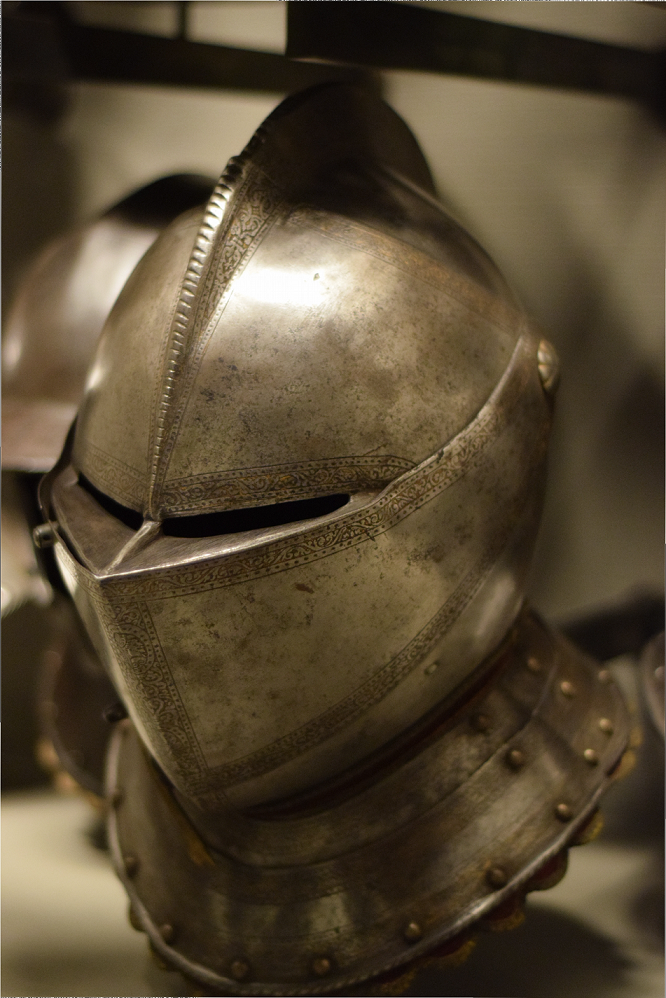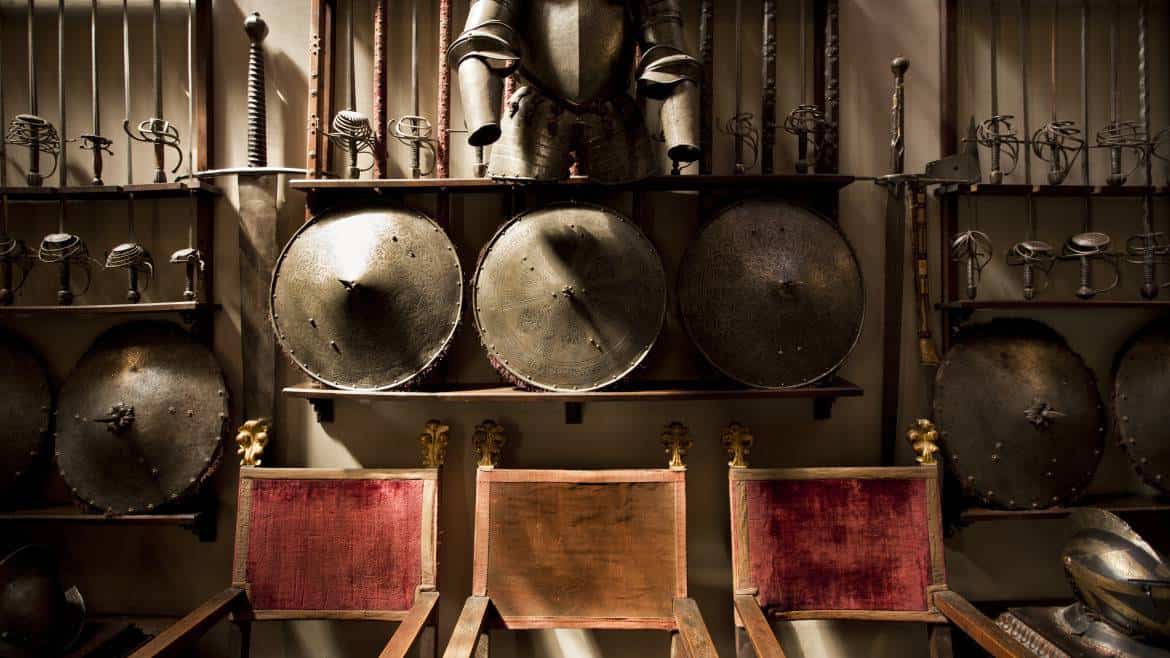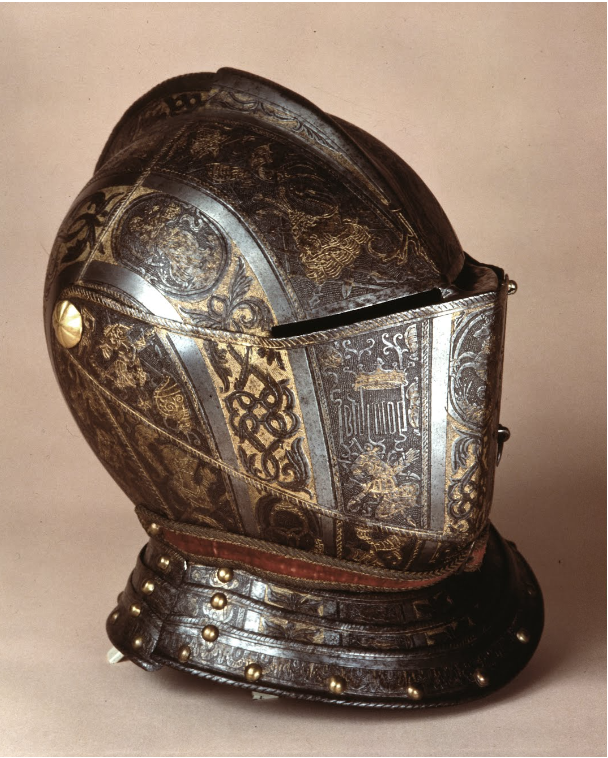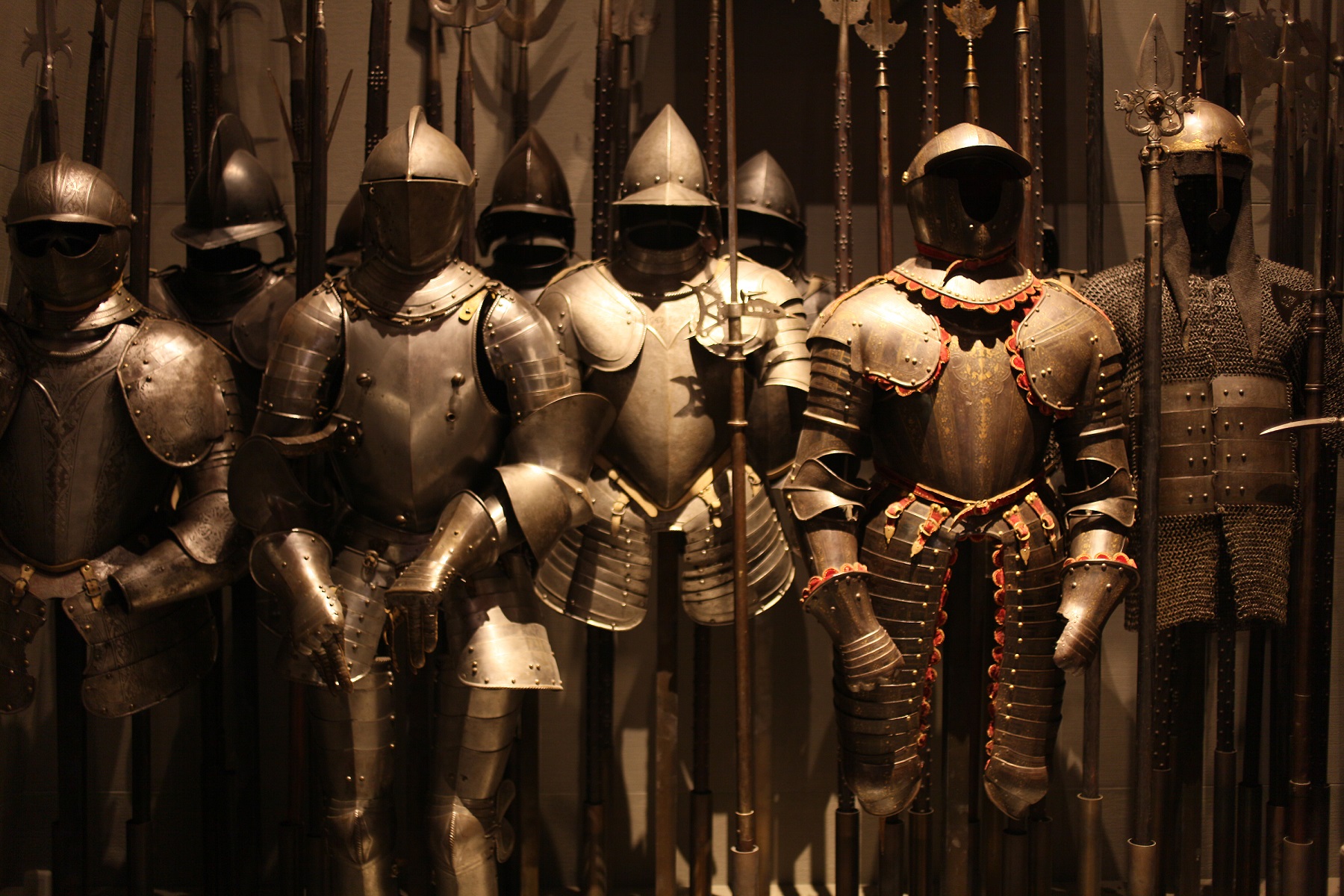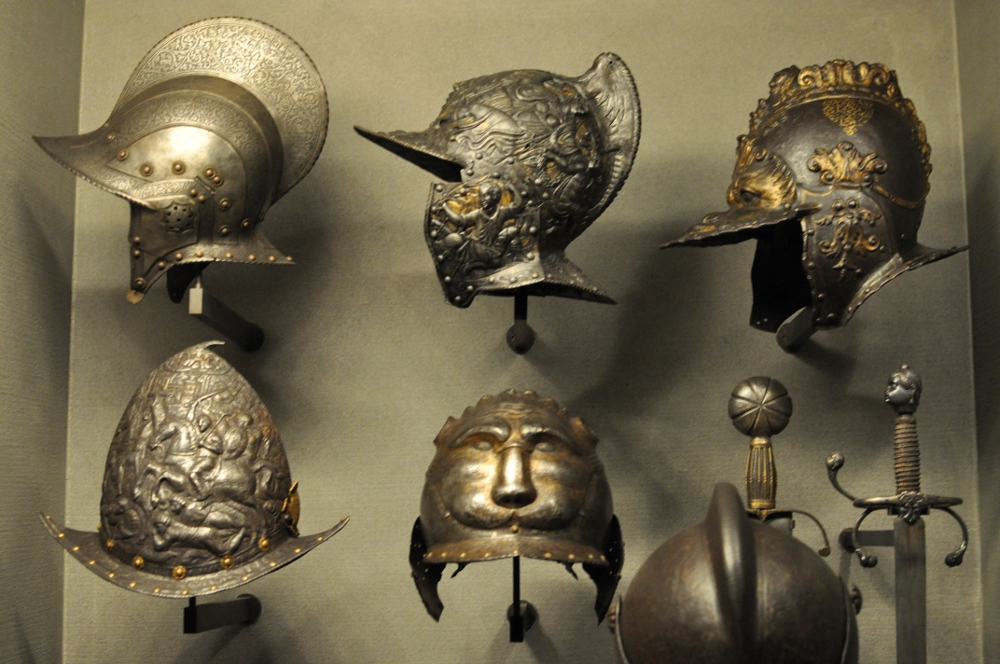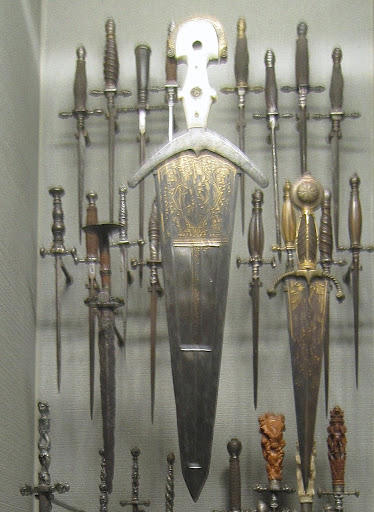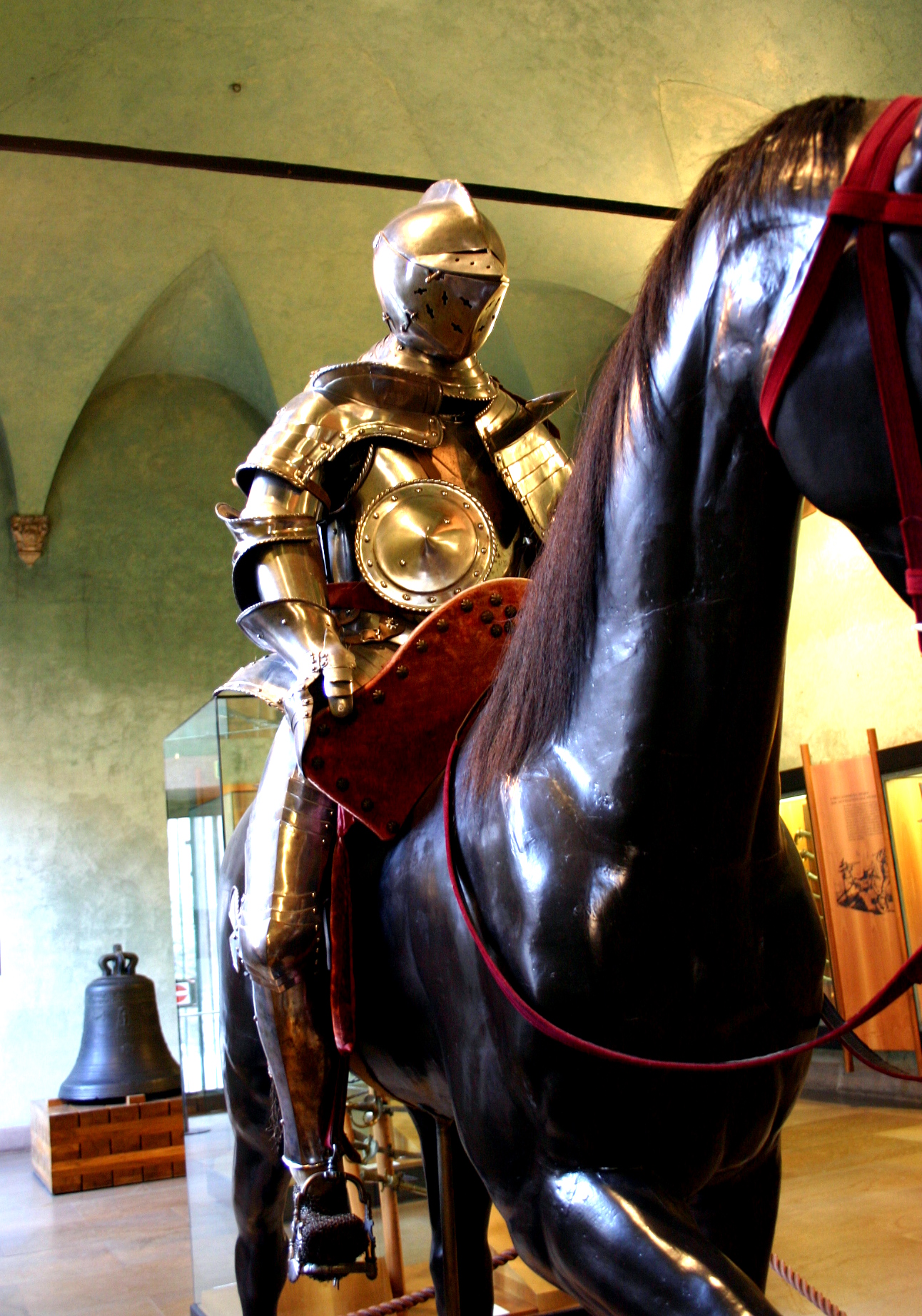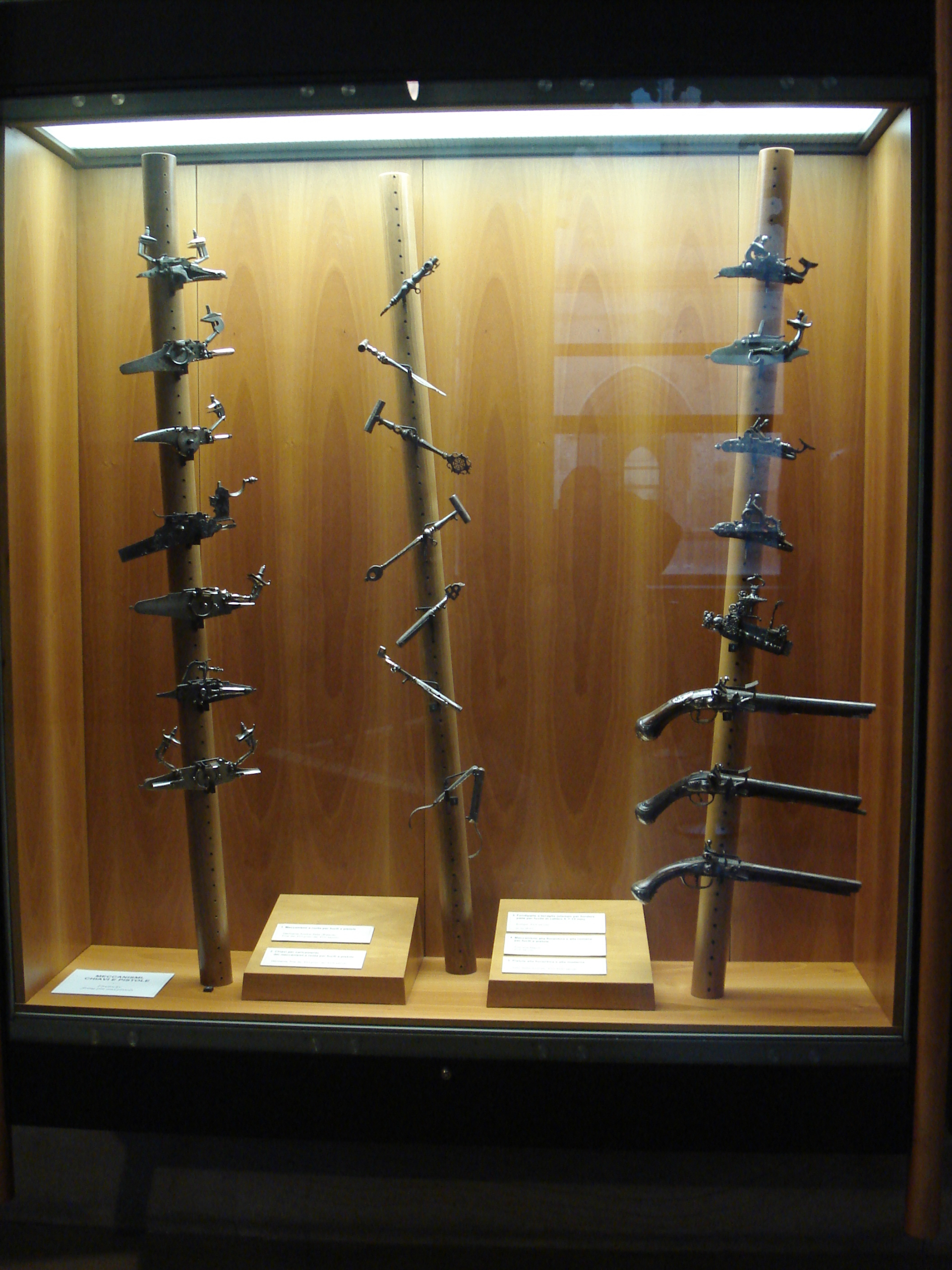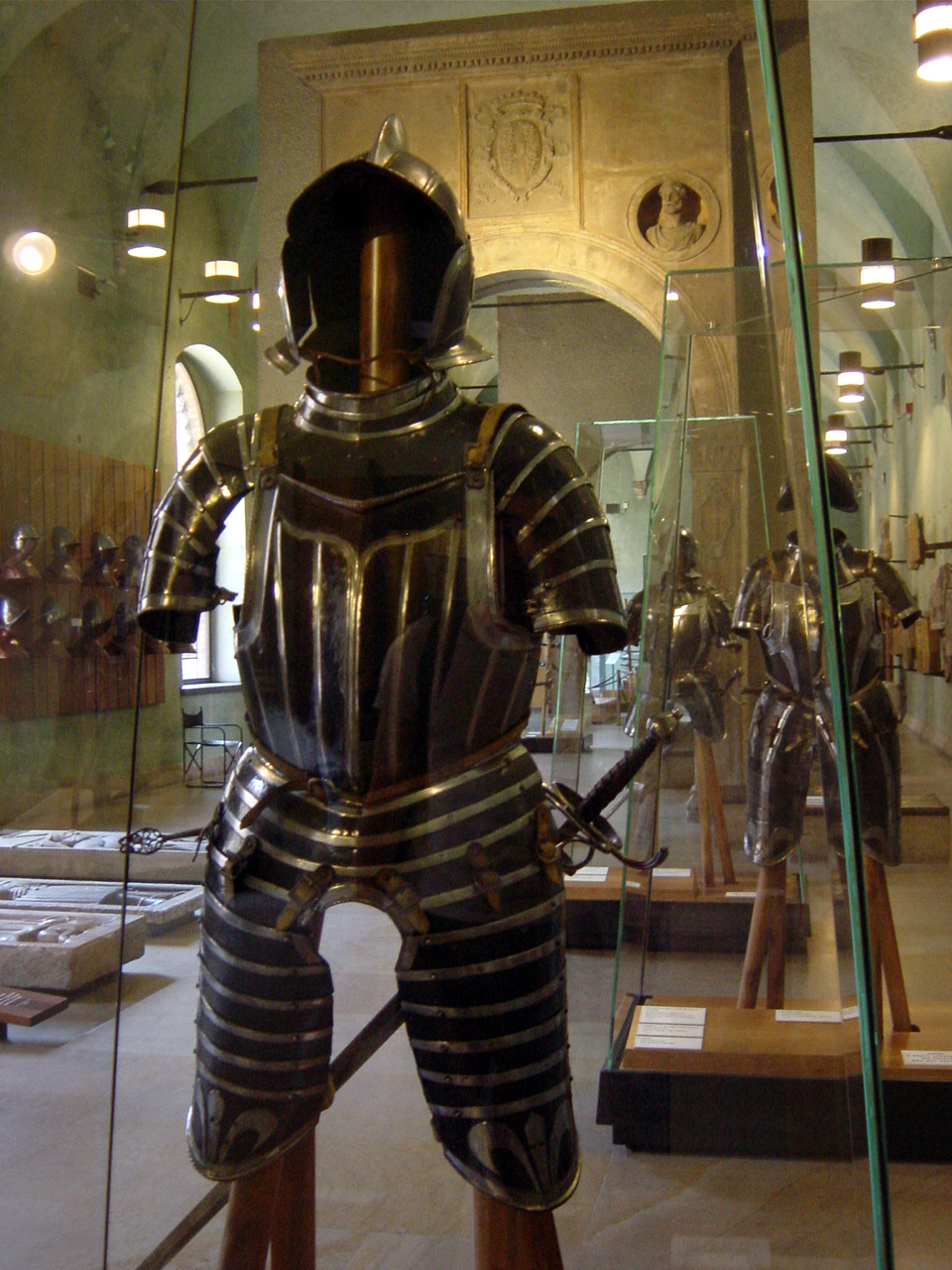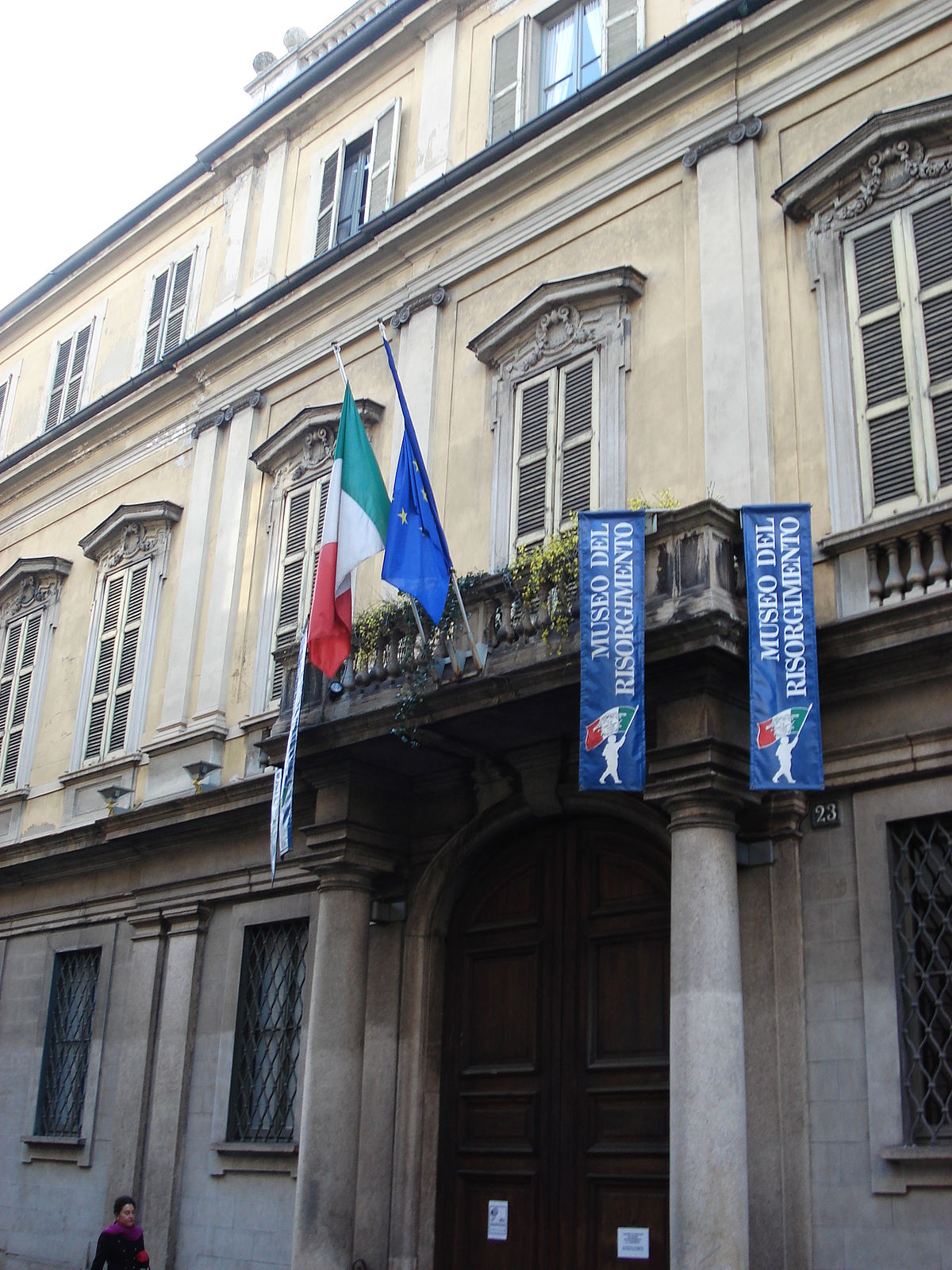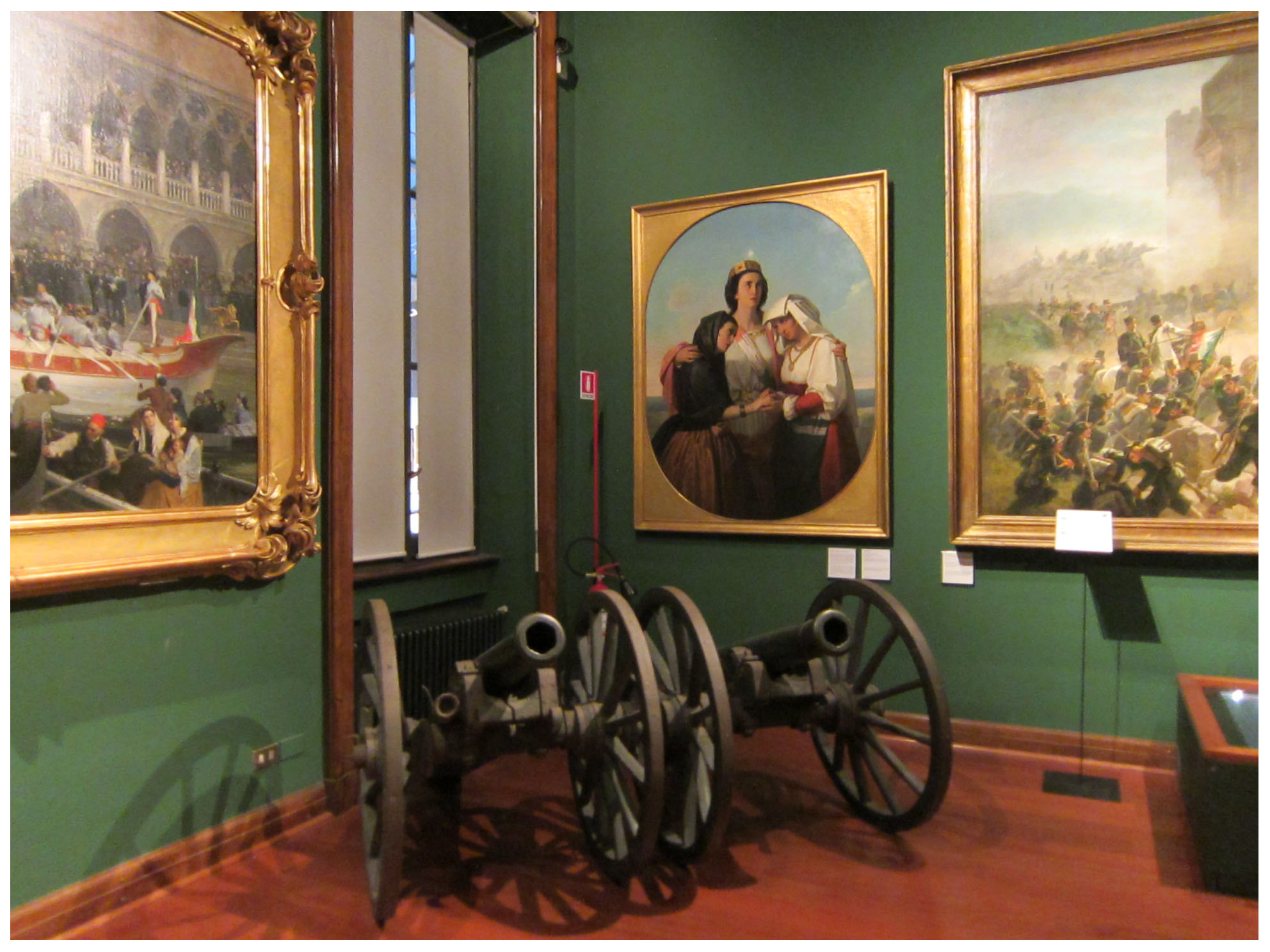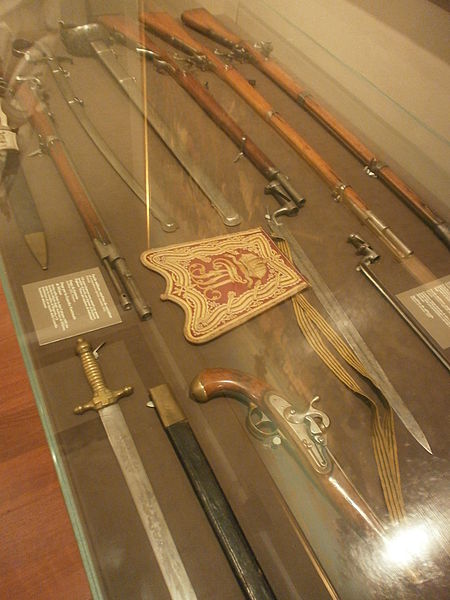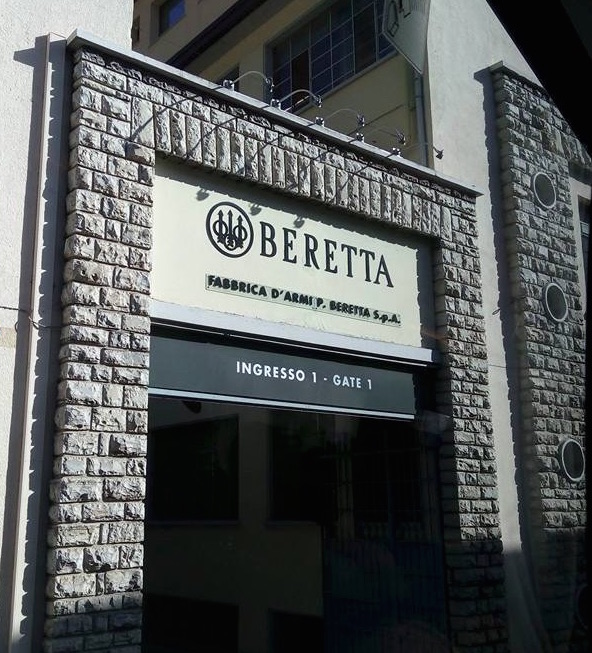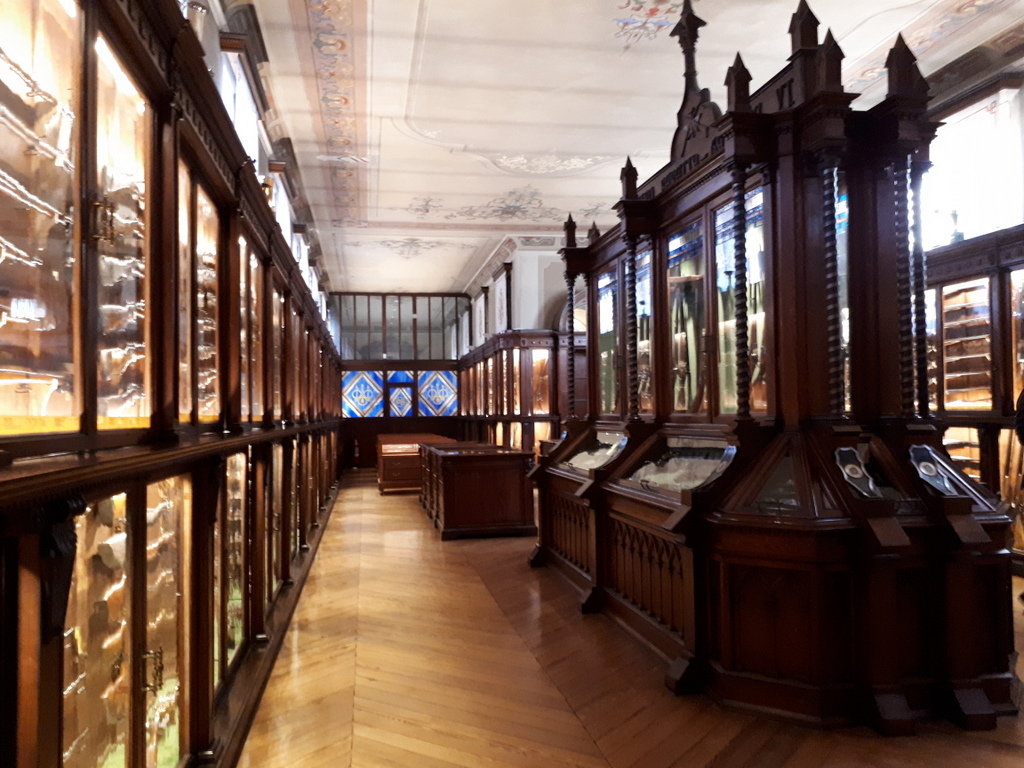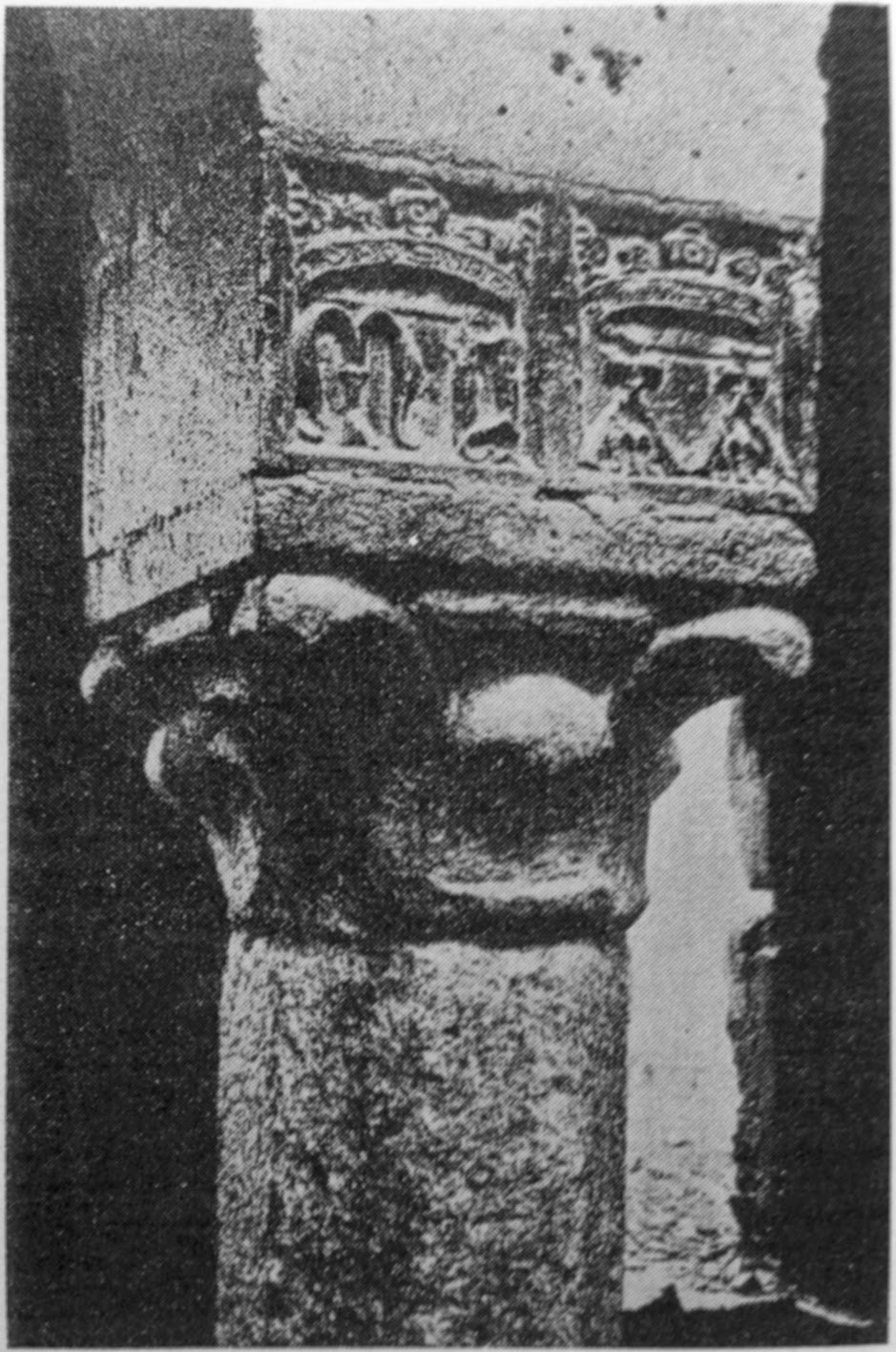Arms, Armours, Weapons.
The collections of arms, armours, and weapons you find today in Milan are just a small part of what was actually manufactured.
The grandiose manufacture of weaponry is testified by the toponymic memory of medieval streets like Armorari (armours), Spadari (swords), Speronari (spurs), Molino delle Armi (mill for sharpening sidearms), or illustrious surnames like Missaglia, a noble family among the most important gunsmiths of the Duchy of Milan. whose forge was in the today Spadari street. Book your private guided tour now
Milan was probably the most dynamic center of armor manufacture during the fifteenth century, home to the earliest comparatively well-documented family of armorers, the Missaglias. This prominent family produced at least four known armorers and from their workshops were exported their products throughout Europe.
During the sixteenth century, Milan housed the workshop of the Missaglia descendant Filippo Negroli (ca. 1510–1579), who may be regarded as the most skilled, esteemed, and famous armorer of his age, perhaps of all time. Together with his relatives produced sumptuously decorated parade armor for the Holy Roman Emperor, the dukes of Urbino, as well as the French and Spanish royal courts.
At the same time, however, the urban and courtly workshops of Brescia had successfully challenged Milan’s dominance.
Four are the main collections to be visited: Book now
- the Armory inside the Sforza Castle, a rich collection of European armour, side arms (defensive such as shields and armour or offensive such as swords and curved blades) and firearms (from arquebuses to revolvers) from the late 14th to the 19th century.
- House Museum Poldi Pezzoli, a palace of wonders where the first passion of the count Gian Giacomo Poldi Pezzoli waits for you.
There are about one thousand Western and Oriental arms and armours. Among them, stand out the Renaissance parade armours made in Milan by Pompeo della Cesa. - The House Museum Bagatti Valsecchi. This rich collection is entirely displayed in the Gallery of Arms, a room of great impact, in which the objects are placed on antique chests, while the pole arms and swords are noteworthy in the racks along the walls. Contact Barbara Quarello now
- At the Museum of the Risorgimento you can find instead the weapons used by European armies between the end of the eighteenth century and the second half of the nineteenth century.
For firearms closer in time, the Beretta Private Museum is worth remembering. It is in Gardone Val Trompia, about one and half hour by car from Milan, in the lake Iseo nearby. In this case the duration of the private guided tour is more than four hours and includes the use of a private high-quality vehicle registered for passenger driven by a professional driver.
Duration: 4 or six hours.
Each tour is completely customized.




